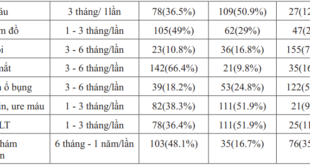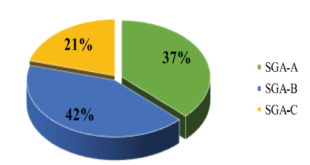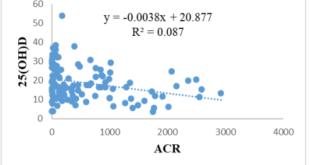CHOICE OF INSULIN IN TYPE 2 DIABETES:
A SOUTH EAST ASIAN PERSPECTIVE
Dr. Sanjay Kalra, Department of Endocrinology, Bharti Hospital, Karnal, India
Prof. Hong Quang Thai, President ,Vietnamese Asociation of Diabetes
and Endocrinology, Vietnam
Prof. Chaicharn Deerochanawong, Rajavithi Hospital, College of Medicine,
Rangsit University, Ministry of Public Health, Bangkok, Thailand
Dr. Goh Su-Yen, Department of Endocrinology, Singapore General Hospital, Singapore.
Prof. Dato’ Dr Mafauzy Mohamed, Director of Campus, Universiti Sains Malaysia,
Health Campus in Kelantan, Malaysia.
Prof. Tint Swe Latt, President, Myanmar Diabetes Association, Yangon, Myanmar
Prof. Than Than Aye, Department of Medicine, University of Medicine 2, Yangon, Myanmar
Prof. Zafar Ahmed Latif, Director, BIRDEM Academy, Dhaka, Bangladesh.
Dr. Prasad Katulanda, Diabetes Research Unit, Department of Clinical Medicine, Faculty of Medicine, University of Colombo, Sri Lanka.
Dr. Touch Khun, Diabetology Unit, Preah Kossamak Hospital, Phnom Penh, Cambodia
Dr. Sum Satha, Department of Medicine, Calmettee Hospital, Phnom Penh, Cambodia
Dr. Vadsana Vongvandy, Center of Diabetes, Mahosod Hospital, Vientiane, Laos
ABSTRACT
South East Asia faces a diabetes epidemic, which has created significant challenges for health care. The unique Asian diabetes phenotype, coupled with peculiar lifestyle, diet, and health care seeking behavior, makes it imperative to develop clinical pathways and guidelines which address local needs and requirements. From an insulin centric viewpoint, the preparations prescribed in such pathways should be effective, safe, well tolerated, non-intrusive, and suitable for use in multiple clinical situations, including initiation and intensification. This brief communication describes the utility of premixed or dual action insulin in such clinical pathways and guidance.
Key words:Asia, basal insulin, biphasic aspart, biphasic lispro, dual action insulin, and diabetes, patient centered care, postprandial glycaemia, premixed insulin
Main correspondence: Dr. Sanjay Kalra
Submission date:7 Feb 2017
Revised date:19 Feb 2017
Acceptance date:15Mar 2017
DIABETES IN SOUTH EAST ASIA
South East Asia is one of the hotspots of the diabetes pandemic, and bears more than its fair burden of the disease. Belonging to the Western Pacific region of the International Diabetes Federation, the zone reports a diabetes prevalence of 9.3%, and a large number of deaths, most of which occur in individuals below the age of 60 (1).
An earlier onset of diabetes, rapid development of complications, and longer life expectancy have led to an increase in the burden of diabetes, and diabetes complications. This strains the existing health care system, which finds it challenging to handle the twin burden of communicable and non-communicable disease which South East Asia nations face.
IMPORTANCE OF CLINICAL PATHWAYS
The role of clinical pathways and clinical recommendations is very important in such a scenario. Well-crafted pathways and algorithms, based on evidence, help in providing much needed guidance to physicians and other health care providers who deal with diabetes. Such documents are expected to offer a comprehensive management strategy, which includes screening and diagnostic tools, as well as non-pharmacologic and pharmacological interventions. They empower general physicians to tackle diabetes in peripheral clinical setups, and encourage timely management of the disease, thus reducing preventable complications.
Detailed suggestions are available from professional bodies such as the American Diabetes Association, European Association for Study of Diabetes, American Association of Clinical Endocrinologists, and International Diabetes Federation (2, 3, 4). There is criticism however, regarding the actual patient centeredness of these publications, and their pan—ethnic appropriateness (5, 6). The techniques of diagnosis, thresholds for intervention, targets of management, and tools used to achieve them (the Four T’s) must be pragmatic, realistic, and concordant with dietary and lifestyle patterns. In view of this, many Asian countries have developed their own national guidelines, relevant to their local needs (7). This is in tune with the national list of essential medicines that each country develops: the subtle differences in these lists reflect the peculiar needs and requirements of each country (8).
NEED FOR SOUTH EAST ASIA SPECIFIC CLINICAL PATHWAYS
In diabetes care, we often tend to follow a Western-oriented management strategy. Data and recommendations from the Western world is usually extrapolated directly to South East Asia, without realizing that unique anthropometry, lifestyle and glucopheno-type of South East Asia modulates responses to pharmacotherapy. It should also be recognized that many South East Asian countries, especially the more urbanized and multiracial ones, are experiencing rising rates of obesity and diabetes
The Asian type 2 diabetes phenotype is well known (9). South East Asians have a relatively lower body mass index, and insulin secretory defect plays a more important role in the pathogenesis of diabetes. Caucasians, on the other hand, present with predominant insulin resistance. Thus, insulin replacement, both prandial and basal, is needed at an earlier stage in Asians with diabetes. There is a unique Asian lifestyle, “diet-type”, and health care seeking behavior, which is prevalent across most of the continent. In many countries of South East Asia, persons present to the health care system at a relatively later stage, with significant glucotoxicity and lipotoxicity. Reversal of this toxicity may entail administration of adequate amounts of both prandial and basal insulin.
Animal studies have proven that malnutrition during pregnancy can lead to decreased β-cell function and mass in newborns. Mothers who had suffered the Dutch Famine gave birth to children who developed impaired glucose tolerance and type 2 diabetes in later life (10). The Great Chinese Famine sufferers experienced an increase in the risk of hyperglycemia during adulthood. This association appears to be exacerbated by a nutritionally rich environment in later life (11). While most countries in Asian have experienced chronic food shortages in the past, and this pathophysiologic pathway may have contributed to diabetes in elder generations, food sufficiency has been achieved now.
Rice forms the staple diet of all of South East Asia, and the high carbohydrate load requires prandial insulin coverage in persons with diabetes. The South East Asian diet pattern is also peculiar. Many persons take two heavy meals in a day, and find it difficult to adjust to a 3+3 meal pattern which is an essential correlate of a basal bolus regime.
The high post prandial glucose levels, observed in Asian populations, are due to intake of high carbohydrate meals in large quantity, a relatively higher glycemic index of food staffs in this ethnic group (12), delayed presentation of the patient, and acceptance of insulin therapy. The prescription and use of insulin therapy must correctly and appropriately address the Asian pathophysiology and lifestyle habits.
INSULIN FOR TYPE 2 DIABETES IN SOUTH EAST ASIA
Such control can be achieved by various regimes, including basal, pre-mixed, basal bolus, basal plus, and different delivery devices, viz. vials /syringes, disposable / reusable pens, can be utilized this purpose. The choice of regimes, preparation, and delivery devices, should be made in a patient-centered manner (13), following the spirit of informed and shared decision –making.
In a national clinical pathway or algorithm, however, preference should be given to therapeutic options which have the potential to provide maximum benefit to the maximum number of intended beneficiaries. Choosing an inappropriate insulin may delay control, worsen complications and negatively impact the patient’s (and community’s) trust in the health care system. On the other hand, initiating an insulin which provides effective, safe, well –tolerated, convenient and non –intrusive glucose control helps improve both biomedical and psychosocial outcomes.
Clinical pathways and algorithms designed for South East Asia should be based upon pathophysiological abnormalities, dietary content, dietary pattern, lifestyle and health care seeking behavior. Thus is especially important with respect to guidance related to choice of insulin for initiation. Asian evidence which proves the need for greater prandial insulin coverage (14), and the advantages of specific insulin preparations should be taken into consideration (15).
Most persons request for insulin therapy which does not interfere with, or intrude into, their lifestyle. In an overstretched health care system, it also make sense to use common stock and to dispense minimum number of pharmaceutical preparations. Thus, an insulin which can be used both for initiation and intensification, should take precedence over preparations which are limited to use in only specific clinical settings.
PREMIXED INSULIN FOR SOUTH EAST ASIA
In the South East Asian content, this option seems to be premixed insulin. This class of insulins provides comprehensive glucose control, including both fasting and postprandial euglycemia, with a lesser number of injections. Premixed analogues, such as biphasic aspart (BIAsp) and biphasic lispro (LisproMix) have the advantage of lower hypoglycemia, lower levels of postprandial glucose excursions, better adherence, improved quality of life, and higher patient satisfaction with treatment. The dual action co-formulation, insulin degludec aspart (IDegAsp), which is an improvement over existing insulin preparations, has added advantages of even lower hypoglycemia, nocturnal hypoglycemia, and greater flexibility (16).
Premixed, or dual action insulin, is the insulin of choice across most of Asia and Africa (17). This is borne out by statistics which reveal that premixed insulin is the most popular type of insulin used in the South East Asian Region (18). The A1chieve observational study also showed that premixed insulin analogues were the preferred mode of insulin use in Indonesia (19).
Premixed insulin can be used once daily, twice daily or thrice daily, depending upon the clinical situation. It can be used for initiation as well as intensification, and lends itself to easy self-titration by the user, and to physician-led dose titration. Various regimes, such as high mix, hetero-mix, and reverse hetero-mix regimes (20), allow for control of difficult-to-control or refractory diabetes.
Premixed insulin is included as an insulin of choice for initiation as well as intensification in guidelines from the International Diabetes Federation (3), Australasia (21), Cambodia (22), India (7), Japan (23), Myanmar (24), South Africa (25), and Vietnam (26). This reinforces the utility of this preparation in diabetes care. Premixed insulin is also mentioned in the national lists of essential medicines of various South East Asian countries (8), including Cambodia (27), Myanmar (28) and Vietnam (29). The comprehensive Laotian formulary of essential medicines (30) also mentions “insulin zinc (mixed)” as an essential drug. This preparation therefore seems optimal for inclusion in various national clinical pathways and guidelines across South East Asia.
Data from DiabCare Asia suggest that conventional strategies and practices are ineffective in achieving good glycemic control. In Malaysia, for example, only 41% of participants achieved a target HbA1c < 7.0%, with a mean HbA1c of 7.8 ± 2.2% (31). Indonesia reported a mean HbA1c of 8.2 ± 2.0%, with 32.1% participants achieving target (32). Results from Bangladesh showed a mean HbA1c of 8.6±2.0% with only 23.1% of the patients achieving the target of <7% (33). Surveys in Thailand show similar trends, with 29.7% to 41.3% participants reaching HbA1c goal in various studies (34). These figures suggest that we need to enhance efforts for timely initiation of insulin, with preparations that are effective in controlling both fasting and postprandial glucose.
SOUTH EAST ASIAN LEADERSHIP
South East Asia is recognized as a global leader in provision of essential medicines for chronic disease, with best practices from Vietnam being highlighted by the World Health Organization website (35).
It seems natural, therefore, for South East Asian nations to continue their proactive and patient centered approach towards management of diabetes. This can be done ensuring publication and adoption of updated national clinical pathways and guidelines, which reflect and respond to the lifestyle, dietary patterns and biomedical as well as psychosocial needs of their citizens
REFERENCES
- Regional fact sheet. Available at: http://www.diabetesatlas.org/.Last accessed 24 November 24, 2016.
- Inzucchi SE, Bergenstal RM, Buse JB, Diamant M, Ferrannini E, Nauck M, et al. Management of hyperglycemia in type 2 diabetes, 2015: a patient-centered approach: update to a position statement of the American Diabetes Association and the European Association for the Study of Diabetes. Diabetes Care. 2015; 38(1):140-9.
- Global Guideline for Type 2 Diabetes. Available at:http://www.idf.org/ guideline-type-2-diabetesLast accessed on 2016 Nov 24.
- Handelsman Y, Bloomgarden ZT, Grunberger G, Umpierrez G, Zimmerman RS, Bailey TS, et al. American Association of Clinical Endocrinologists and American College of Endocrinology-clinical practice guidelines for developing a diabetes mellitus comprehensive care plan-2015-executive summary. Endocrine Practice. 2015; 21(4):413-37.
- Kalra S, Balhara YS, Das AK. The bio-psycho-social model and the American Diabetes Association European Association for the Study of Diabetes position statement on management of hyperglycemia. J Soc Health Diabetes 2013;1:53-5
- Kalra S, Bantwal G, John M. The ADA-EASD patient-centered guidelines for management of hyperglycemia: Are they patient-centered enough? J Soc Health Diabetes 2013;1:41-3
- Madhu SV, Saboo B, Makkar BM, Reddy GC, Jana J, Panda JK, et al.; Guideline Development Group. RSSDI clinical practice recommendations for management of type 2 diabetes mellitus, 2015. Int J Diabetes Dev Ctries 2015; 35:1-71.
- Kalra S, Gupta Y, Saboo B. Essential drugs in diabetes: South and South East Asian perspective. Journal of Social Health and Diabetes. 2015 Jan 1; 3(1):4.
- Chan JC, Yeung R, Luk A. The Asian diabetes phenotypes: Challenges and opportunities. Diabetes research and clinical practice. 2014; 105(1):135-9.
- De Rooij SR, Painter RC, Phillips DI, Osmond C, Michels RP, Godsland IF, et al. Impaired insulin secretion after prenatal exposure to the Dutch famine. Diabetes care. 2006; 29(8):1897-901.
- Li Y, He Y, Qi L, Jaddoe VW, Feskens EJ, Yang X, et al. Exposure to the Chinese famine in early life and the risk of hyperglycemia and type 2 diabetes in adulthood. Diabetes. 2010; 59(10):2400-6.
- Venn BS, Williams SM, Mann JI. Comparison of postprandial glycaemia in Asians and Caucasians. Diabet Med 2010; 27:1205-8.
- Kalra S, Gupta Y. Choosing an insulin regime: a developing country perspective. African Journal of Diabetes Medicine Vol. 2014 May; 22(1).
- Ji L, Min KW, Oliveira J, Lew T, Duan R. Comparison of efficacy and safety of two starting insulin regimens in non-Asian, Asian Indian, and East Asian patients with type 2 diabetes: a post hoc analysis of the PARADIGM study. Diabetes, Metabolic Syndrome and Obesity: Targets and Therapy. 2016; 9:243.
- Kalra S, Plata-Que T, Kumar D, Mumtaz M, Søndergaard F, Kozlovski P, et al. Initiation with once-daily BIAsp 30 results in superior outcome compared to insulin glargine in Asians with type 2 diabetes inadequately controlled by oral anti-diabetic drugs. Diabetes Res Clin Pract 2010; 88:282-8.
- Kalra S. Insulin degludec aspart: the first co-formulation of insulin analogues. Diabetes Therapy. 2014 Jun 1; 5(1):65-72.
- Kalra S, Balhara YP, Sahay BK, Ganapathy B, Das AK. Why is premixed insulin the preferred insulin? Novel answers to a decade-old question. J Assoc Physicians India. 2013 Jan; 61(1 Suppl):9-11.
- Matsuba I, Sawa T, Kawata T, Kanamori A, Jiang D, Machimura H, et al. Cross-National Variation in Glycemic Control and Diabetes-Related Distress among East Asian Patients Using Insulin: Results from the MOSAIc Study. Diabetes Therapy. 2016 Jun 2:1-2.
- Available at: http://www.a1chieve.com/en/reports-generator/indonesia. Last accessed on 24 November 2016
- Kalra S, Farooqi MH, El-Houni AE. High-mix insulins. Indian journal of endocrinology and metabolism. 2015; 19(5):686.
- Wu T, Betty B, Downie M, Khanolkar M, Kilov G, Orr-Walker B, et al. Practical Guidance on the Use of Premix Insulin Analogs in Initiating, Intensifying, or Switching Insulin Regimens in Type 2 Diabetes. Diabetes Therapy. 2015 Sep 1; 6(3):273-87.
- Clinical Practice Guidelines for the Treatment of Type 2 Diabetes at NCD Clinics/RHs, Department of Preventive Medicine, Ministry of Health, Cambodia, 2015. pp 20.
- Treatment Guide for Diabetes 2014-2015. Available at: http://www.jds.or.jp/modules/en/index.php?content_id=1. Last accessed on 25 November 2016
- Myanmar Guideline for Insulin Therapy, 1st Edition, Yangon: Myanmar Diabetes Association, 2014: pp 18-19.
- Amod A, Berg G. The 2012 SEMDSA guidelines for the management of type 2 diabetes. JEMDSA. 2012; 17:S1-95.
- Vietnam: Local Guideline for Diagnose and Treatment in T2DM. Hanoi: Ministry of Health of Vietnam,2014
- Essential Medicines List. Available at: http://www.ddfcambodia.com/document/68-essential-medicines-list.html. Page 28 (CPA 2). Last accessed on 28 November 2016.
- Essential and complementary medicines and vaccines for Myanmar. Available at: moh.gov.mm/file/NLEM.pdf. Page 24. Last accessed on 28 November 2016
- Viet Nam. National Medicines List/Formulary/Standard Treatment Guidelines. Available at: http://www.who.int/selection_medicines/country_lists/vnm/en/. Last accessed on 25 November 2016.
- 1406186221National medicine formulary Lao.pdf. Available at: http://www.fdd.gov.la/download/contents_documents/. Page 307. Last accessed on 28 November 2016
- Mafauzy M. Diabetes control and complications in public hospitals in Malaysia. Medical Journal of Malaysia. 2006 Oct; 61(4):477.
- Soewondo P, Soegondo S, Suastika K, Pranoto A, Soeatmadji DW, Tjokroprawiro A. The DiabCare Asia 2008 study-Outcomes on control and complications of type 2 diabetic patients in Indonesia. Medical Journal of Indonesia. 2010 Nov 1; 19(4):235.
- Latif ZA, Jain A, Rahman MM. Evaluation of management, control, complications and psychosocial aspects of diabetics in Bangladesh: DiabCare Bangladesh 2008. Bangladesh Medical Research Council Bulletin. 2011; 37(1):11-6.
- Deerochanawong C, Ferrario A. Diabetes management in Thailand: a literature review of the burden, costs, and outcomes. Globalization and health. 2013 Mar 14; 9(1):11.
- Country stories. Available at: http://www.who.int/medicines/about/country-stories/en/. Last accessed on 28 November 2016.
 Hội Nội Tiết – Đái Tháo Đường Miền Trung Việt Nam Hội Nội Tiết – Đái Tháo Đường Miền Trung Việt Nam
Hội Nội Tiết – Đái Tháo Đường Miền Trung Việt Nam Hội Nội Tiết – Đái Tháo Đường Miền Trung Việt Nam



